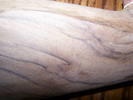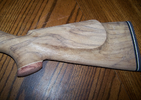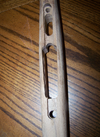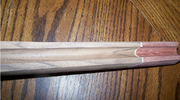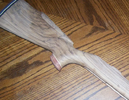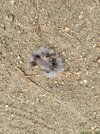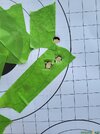So, range day...
The thing is perfectly reliable and more accurate than me, at least with irons. Averages about 3" for three shot groups at 100 yards. (Edit: big fat lie alert. These groups were all at 50 yards. I must have been on autopilot when I typed out this post.) I took a picture of one of the "bragging groups".
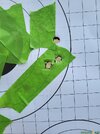
Didn't measure it, but those are 1" squares, so a bit under 2".
Started with 60 grains Swiss 2f and went up to 90. The rifle liked 70 and 80 grains equally well, so I filed and drifted the sights for 70, which took just one try. Nice when that happens.
With a clean bore and a 60 grain charge, patches showed some cutting from the rifling.
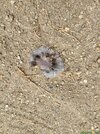
This isn't unusual with my customary .010 patches, and as long as accuracy is good it doesn't bother me. As the barrel fouled and the charges increased, I started noticing little black smudges in the dirt. I didn't make the connection until I saw one smoking. With 90 grains of powder, the gun blows patches as badly as I've ever seen, turning them into these smoky little caterpillars.
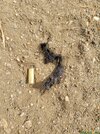
So
@Ugly Sauce called it: the .530 balls and .010 patches aren't going to cut it. I haven't measured the bore yet, but it looks like I'll need to find a mold at .520 or less, and patches in the .018+ neighborhood. Darn, more shooting to do.

